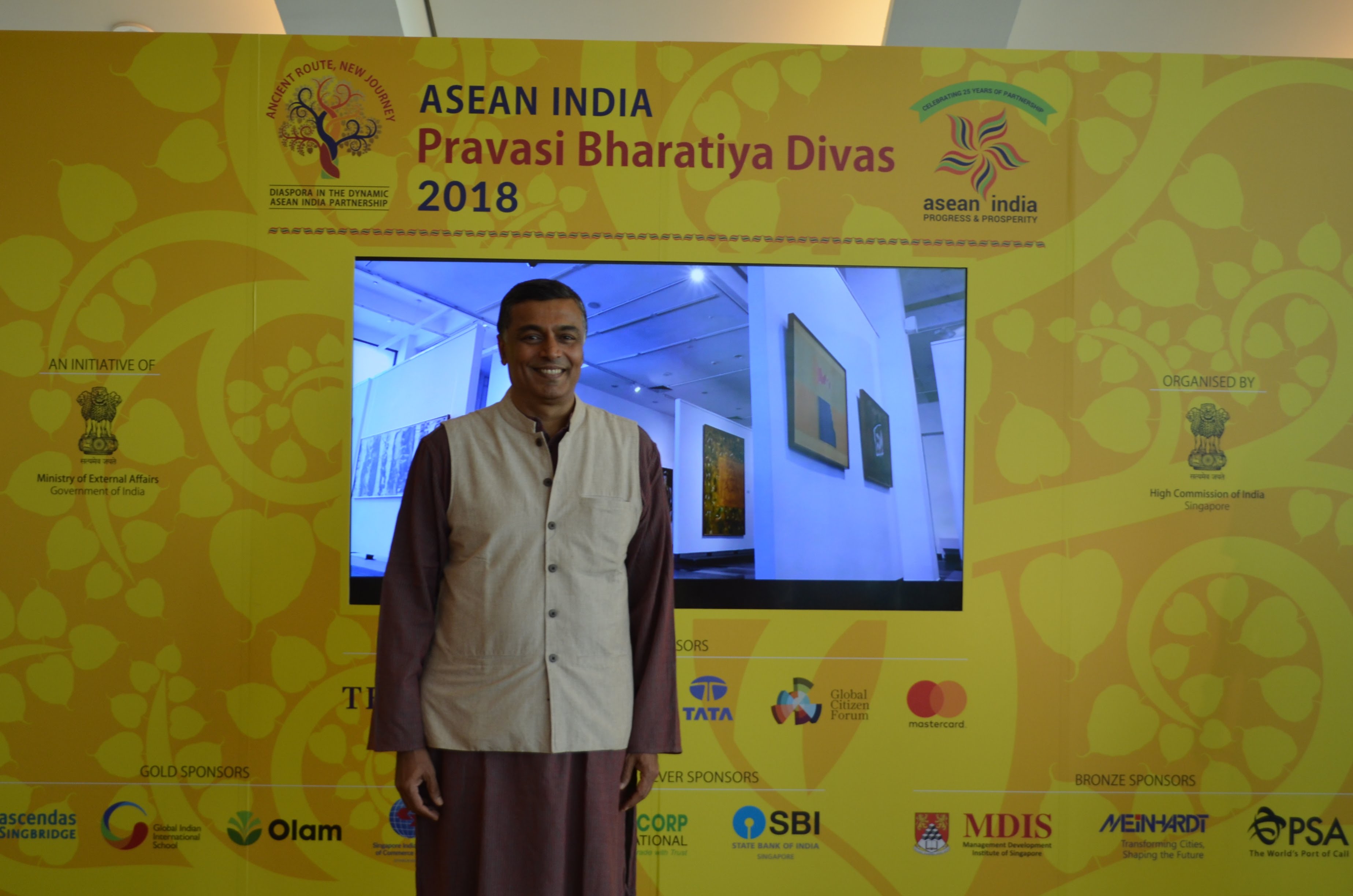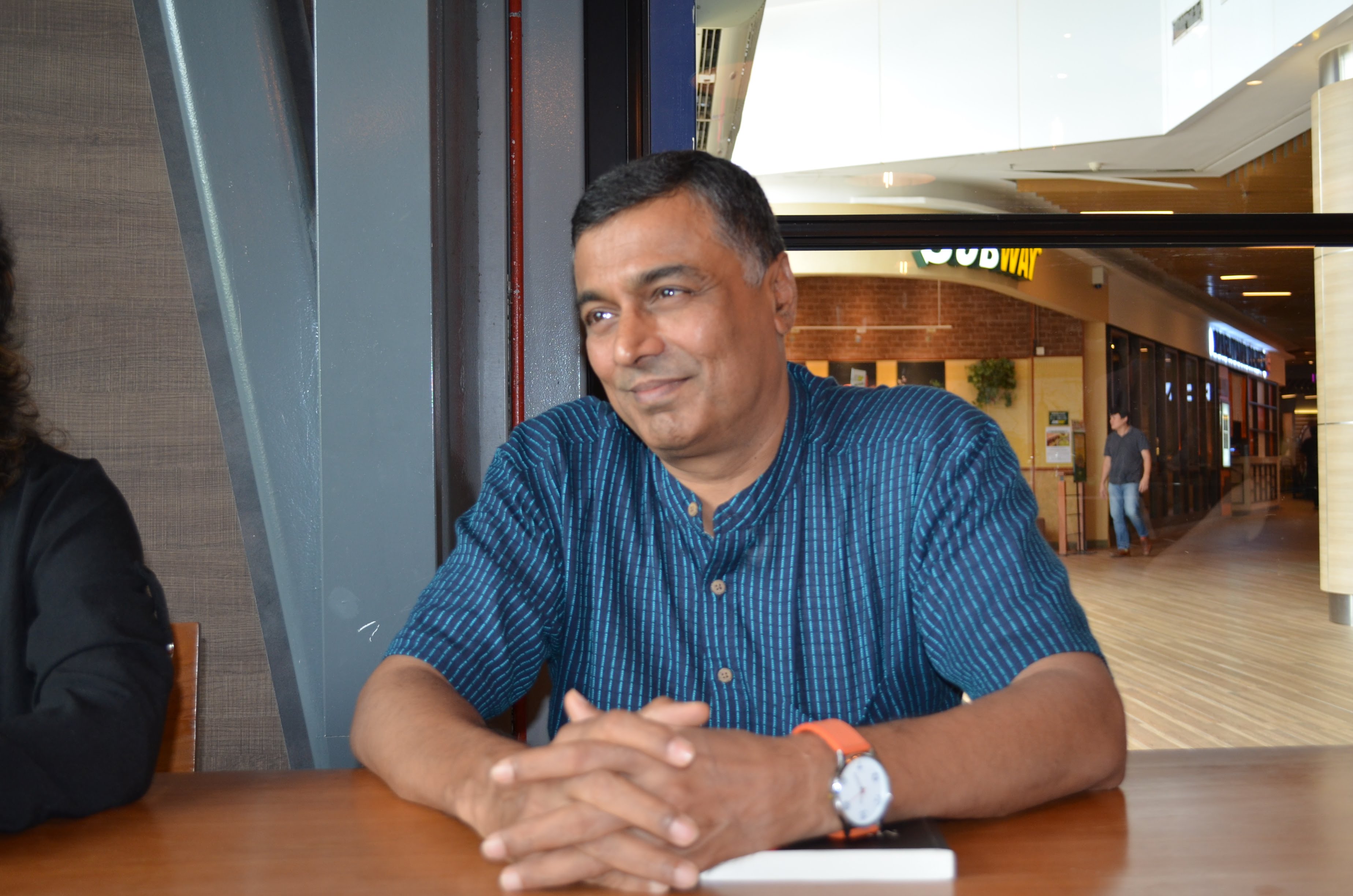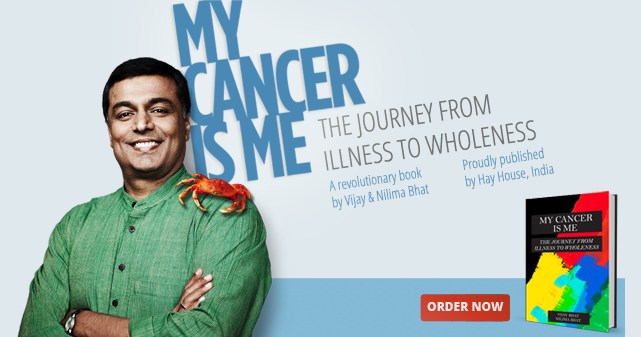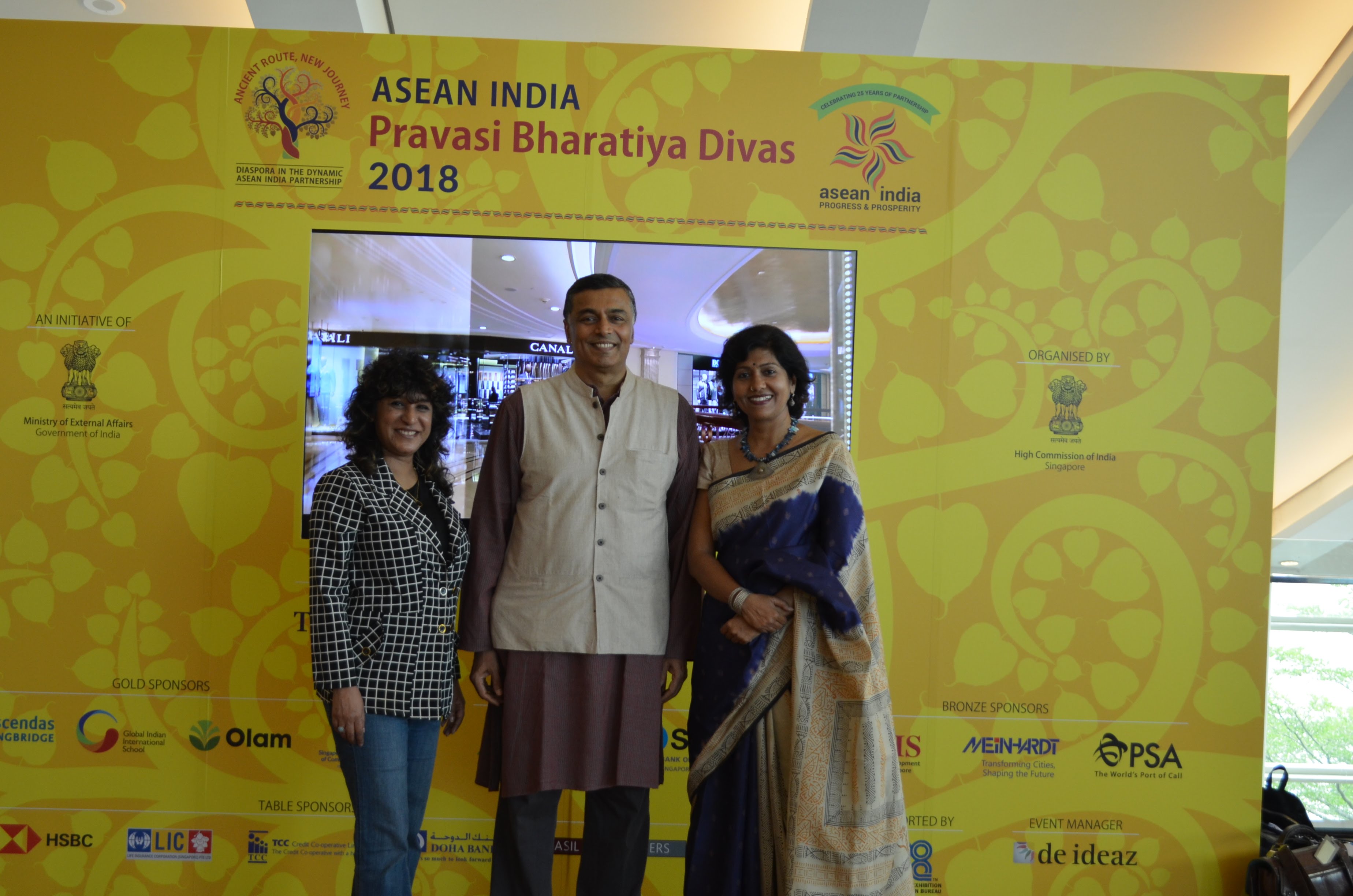Former advertising executive Vijay Bhat, a ‘cancer thriver’, today offers cancer coaching to those suffering from the disease and their family and friends
“Cancer Awakens does not operate in terms of cure at all. We work in terms of healing; they are two different things. A cure can come from outside; healing happens to the person from within, not the disease. A person can be healing inside even as their body is failing," said Vijay Bhat about his brainchild. “Our work is to focus on healing the person, irrespective of the medical outcome. We think in terms of healing, quality of life and the wholesomeness that a person can bring into their life,” Bhat added.
Vijay himself was a victim of the disease, and his book My Cancer is Me, co-authored with his wife Nilima, lays out his journey to becoming cancer-free and turning the ordeal into a positive experience that led to a different lifestyle and philosophy for him. Over the next decade, he has made cancer coaching his life’s work and travelled across the world developing a system to train people to help cancer patients with healing using a holistic, integrated approach that focuses on non-medical aspects of recovery not covered by conventional medical treatment. His latest initiative, Cancer Awakens, seeks to systemise his process and create a programme that is, in his own words, “of the survivor, by the survivor, for the survivor”.
Vijay Bhat was part of the Yoga and Wellness Zone at the recently-concluded Pravasi Bharatiya Divas in Singapore, where he was part of a healing zone on the first day and participated in a panel discussion on alternative modalities for integrated medicine and a conference on Ayurveda on the second day.
Connected to India (CtoI) spoke exclusively to Vijay about his initiative in cancer coaching. Excerpts from the interview follow:
CtoI: Please tell us a bit about your journey from cancer survivor to cancer thriver?
Vijay Bhat: I don’t think I can point to any single turning point or event. I just knew that after two years of surgery, people start thinking of you as a survivor. But for some reason I was feeling uncomfortable with that word; I didn’t know why. I kept thinking that there must be a better term to describe people who have made it past five years; there are people who have made it past 10 years. How can everyone be called a survivor? Somewhere along the line, that word just popped for me; that I should be calling myself a 'thriver'.
It also coincided with the fact that I was studying neuro linguistic programming. I was reading about how language changes your mindset as much as your mindset changes your language. I was reading an article that described cancer as a monster, as a terrorist, as a scourge of mankind. I said to myself that this language is causing people to be filled with fear and anxiety. We should change the language anyway. So I stopped calling myself a patient first. I said, 'I am a cancer impatient. That was one little switch; the survivor-thriver was another one and the third one was that all my doctors used to throw statistics at me. I asked them for anecdotes of success stories instead. They were about quality, not quantity. Something flipped for me when I stopped thinking of myself as a patient. I said I want to be an impatient, not a patient; a thriver, not a survivor. I don’t want to be a statistic, I want to be an anecdote'.
I felt my own attitude change. Every time I’ve spoken since, I’ve explained this and this has had a positive impact on me.
CtoI: In your experience, what levels of acceptability do you find for your views and the holistic approach to dealing with cancer you talk about?
Vijay Bhat: First of all, people who are dealing with cancer are feeling very vulnerable and fragile. At a basic level, they want a certain amount of optimism and hope. Having gone through the entire ordeal myself 16 years ago and interacted with many people since, they see me as living proof of that.
When there is that living proof and when I say what worked for me was a holistic and integrated approach, it carries a certain amount of credibility. Number two is that all of us intuitively know that there are different aspects to us; physical, emotional, mental, social, spiritual among others. We know we are healthier in certain aspects and unhealthier in others. This is not new to us: somebody might be emotionally very stable, but their physicality is in bad shape, for instance. So far, people have not been able to provide a simple framework to understand this. If I am able to simplify and say, ‘listen, this is something you already know, that in order to be healthy and whole, you have to deal with all five of these aspects.’”
The challenge is, it takes a lot of hard work. If I am not used to looking after myself physically, then for me to bring about that change is hard. I find that it is not conceptually hard; it’s is hard to implement. It is in the implementation that we need a good coach, to tailor an appropriate regimen and to keep us on track.
CtoI: How long have you been running Cancer Awakens and your cancer coaching programmes?
Vijay Bhat: Cancer Awakens as an entity is very new; but the programme has been going on for almost six years. We started running it in a very small, informal way and have slowly built it up.
CtoI: How does a typical relationship with one of the people you interact with pan out? At what stage do people generally approach you?
Vijay Bhat: With cancer, there are what we call the five shocks. The first shock is of diagnosis; when the rug is pulled from under your feet. People are very wobbly at that stage, and some of them come us then. You’ve got to deal with them very differently. Some people come to us at the second shock, when they realise that the diagnosis, treatments, surgery and running around is a nightmare that disrupts their life. It’s when they realise that normalcy as they know it is finished. Some people come to us with their complaints at this stage.
If you’re lucky like I was, you escape. But most people are not that lucky. They go through their treatments, and their doctors say to wait for six months or so to gauge the effect. Now, people are stuck in limbo; what happens to my plans, where do I go from here are questions people ask themselves. This in a way is in between the second and third shock, when people ask these fundamental questions; many times, they come to us then.
If you’re not lucky, they get the third shock when the doctor tells them the cancer has recurred or spread. Now, they know they are on a slippery slope and need all the help they can get. Many people go looking and find us at this time. The fourth shock is when the doctor tells them there is no hope and to go home, do what you enjoy doing and live as well as they can.
Each shock is devastating, but of a different nature. The fifth shock is at end of life. The last weeks, when you see the person is fading, and the grieving period after he passes away. Anyone who has had an indirect experience with cancer will recognise these shocks; it’s up to us to recognise that the Western medical system does not deal with this at all. It just provides treatments, doing the best it can until there’s nothing more it can do. So, to take a more humanistic approach, we have to coach our clients differently based on where they are. There’s no simple answer; the relationship evolves.
If someone has engaged with you from the beginning through their journey, it ends up becoming a very deep and intimate relationship. Many of our coaches are people who we have coached through cancer. It’s a very deep bond and one of the most fulfilling things for a coach to have that relationship.
CtoI: The biggest thing in a patient’s mind is getting cured. What is the objective of Cancer Awakens and the coaches to engage people with cancer in this setting? How do you translate your involvement across the five shocks?
Vijay Bhat: One of the things that has happened in our medical system is an obsession with a cure. There’s currently no cure for cancer, and I hope there will be someday. Cancer Awakens does not operate in terms of cure at all. We work in terms of healing; they are two different things. A cure can come from outside; healing happens to the person from within, not the disease. A person can be healing inside even as their body is failing.
Our work is to focus on the person and help him to heal irrespective of the medical outcome. We think in terms of healing, quality of life and the wholesomeness that a person can bring into their life. For this, unfortunately, in the current medical system there are no metrics. So we’re developing our own, called a quality of life index, to help somebody see and track how they are doing on this journey in a reasonably scientific and robust way.
It’s about helping their state of mind, body, emotions and spiritual states.
CtoI: How do you help people if they come to you with knowledge of their own? Today, in the age of information, how as a cancer coach would you advise people prioritise their actions and sift through the mountain of data they have access to?
Vijay Bhat: Patients either come to us with too much information and confusion or too little information and confusion. So our first job is to curate high-quality information. We’ve actually spent the last seven years doing so, and a person will get a certain modicum of quality information on our portal. Number two is that the coaching process is not prescriptive in nature. The client and he coach co-create the regime. If a client is coming to us in a vulnerable, fragile, confused state, you can’t put that person in the driving seat.
In the early days, the coach might need to be directive. As the client becomes more empowered and knowledgeable, they will start to make their own choices and we welcome that as long as they are consistent and follow a certain framework. If someone is going to bounce around, then I don’t’ think the coaches have done a good job.
People come to us in a confused state; it’s up to us to bring them to a place where they’re able to say ‘okay, I understand why’. We can add value without getting people to change their fundamental predispositions. This is coaching. Ultimately, if healing happened from inside, the person, not the coach is responsible for it. The coach’s job is to strike the match and light the fire.
CtoI: What is your plan for integrating modern breakthroughs in medicine and experimental treatments for cancer in your process?
Vijay Bhat: Cancer Awakens personnel are not clinically or medically trained. But we must be knowledgeable enough to be able to advise or at least give some guidance to a patient. It’s up to us to voluntarily stay in touch with the latest developments. Number two is that, if indeed we are going to take a holistic and integrated approach, the medical people must be part of it.
It, therefore, becomes incumbent upon us to engage with the best medical practitioners, researchers, academic institutions, because we all want the same thing. How we do so is the challenge; unfortunately, in health and wellness, there is a great deal of polarisation. The two camps are split; one camp is saying everything must happen only based upon research, evidence and randomised double-blind controlled tests; the other one is saying we have been doing this for 3,000 years and let’s get on with it.
The sweet spot is in the middle. It requires that our coaches are able to bridge these two worlds. That requires a high level of maturity to engage with the academics and traditional medicine specialists and to be able to combine and tailor what is appropriate for the client. I would very much like to create a research project and train experts to look into ways this bridge can be formed. If there is new research, our job is to find it, see what makes sense, curate it, reach out to people and try to put our point across to them in their language. Part of what Cancer Awakens wants to do is assume the responsibility of being the bridge.
Among the medical system, there are a minority of mavericks who truly believe in the holistic system; they send us their patients, but they are afraid to be open about it because of potential backlash from the rest of the medical community.
CtoI: How do patients reach out to you, given the lack of widespread acceptance from the medical community at large?
Vijay Bhat: Patients reach out to me based on social media presence, my book, media coverage and other platforms. I believe the way forward is by reaching the consumer directly; that is when the shock is strong and the need is high; people are looking for solutions. Unfortunately, the non-medical system is full of people who try to exploit it. People are testing us out, and over some conversations they realise we’re on their side. Our presence in the marketplace gets the word out.
Cancer Awakens will be joining hands with other initiatives such as Tree of Life to spread their holistic healing approach to fight cancer. Their basic packages include five, eight and 16-session programmes for clients with coaches. They also welcome interactions and cooperation with trained medical professionals. More details can be found on their website. Their ultimate goal is to provide all services online to increase their reach. As Vijay said, “This is the only way to get past the limitations of geography and the physical mobility of people.”






